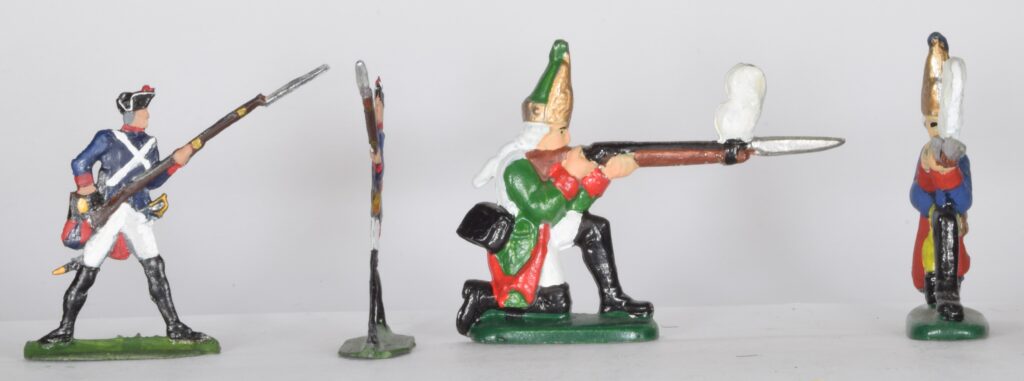I always liked to collect toy soldiers. In those days figures were not cheap, and I saved the money my father gave me to buy another Timpo swoppet figure, sold in an small newsagent in Sintra where I lived at the time. No one of these figures survived to the present day.
Many years after, I and my wife liked to visit a international handicraft fair in Lisbon where I found Russian traders that among many other goods sold metal painted figures from St. Petersbourg companies. Who could resist those beautiful figures? Not me…
When I was a young boy every friend would have some kind of toy soldier. Mostly they were from Britains/Herald or Timpo. In Portugal it was common to have also figures from Brazilian maker “Gulliver” that were copies of Atlantic figures. Presently they occur in flea markets and are easily identified because the logo of the company is engraved under the base.
To make a collection
There can be as many types of collections as there are collectors. At the beginning my objective was to have as many different types of figures as possible. So, logically, a question arises; how many types of figures are there and how we can define them?
There is not an easy answer. Let me try some clues. We can begin with the material in which figures are made. As far as I know the material can be: metal, composition, plastic, resin, wood and paper. Some sub-categories could be recognized. In metal there are lead, aluminium and some alloys. There also stories about toy soldiers made of silver for kings.
We can also group figures according to their shape in flat, semi-flat and “ronde-bosse” (3D). The flat figures are very popular in German and result from the engraving of shits of metal. I have some and the challenge is to paint these figures to give an idea of depth. Semi-flat figures are frequently home-made with metal or rubber moulds. They are not as thin as flats.

Comparison between flat and semi-flat figures.
Other difference is related to the number of pieces that make the figure. The variation goes from one piece to a figure in kit form and variations in between. Kits are sold in boxes with instructions to glue and paint the figure. Some figures are not strictly one piece because the weapon is separate, for example a sword or a shield. Expeditionary Force figures are presented in various pieces but the plastic is not easy to glue. This is similar to the swoppet figures that were made in pieces that were fixed together but not glued. Timpo figures were made in different colours, so painting was not necessary.
We can mention another more subtle difference relating to the objective of the figure. In the beginning they were toy soldiers and produced with children market in mind. Now there are metal figures produced with very high quality of sculpting and painting aimed at the adult market. They are almost art pieces.
Collecting toy soldiers is an hobby with many variations. Collect traditional figures is nice, and some collectors specialise in one maker.